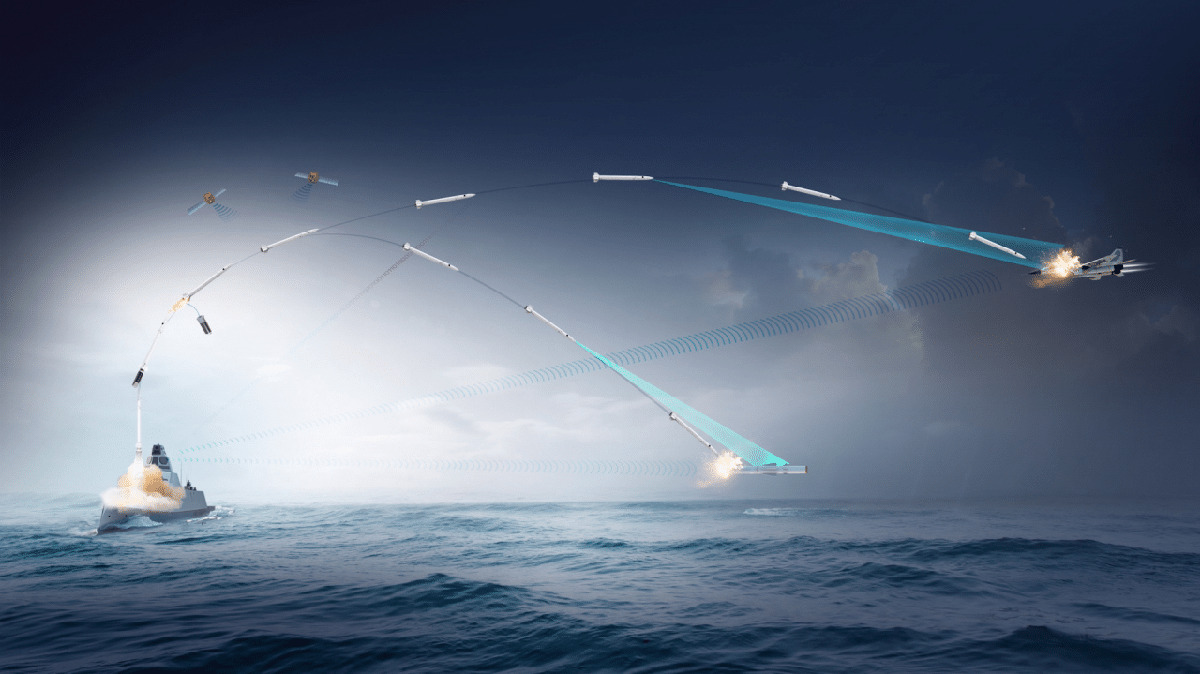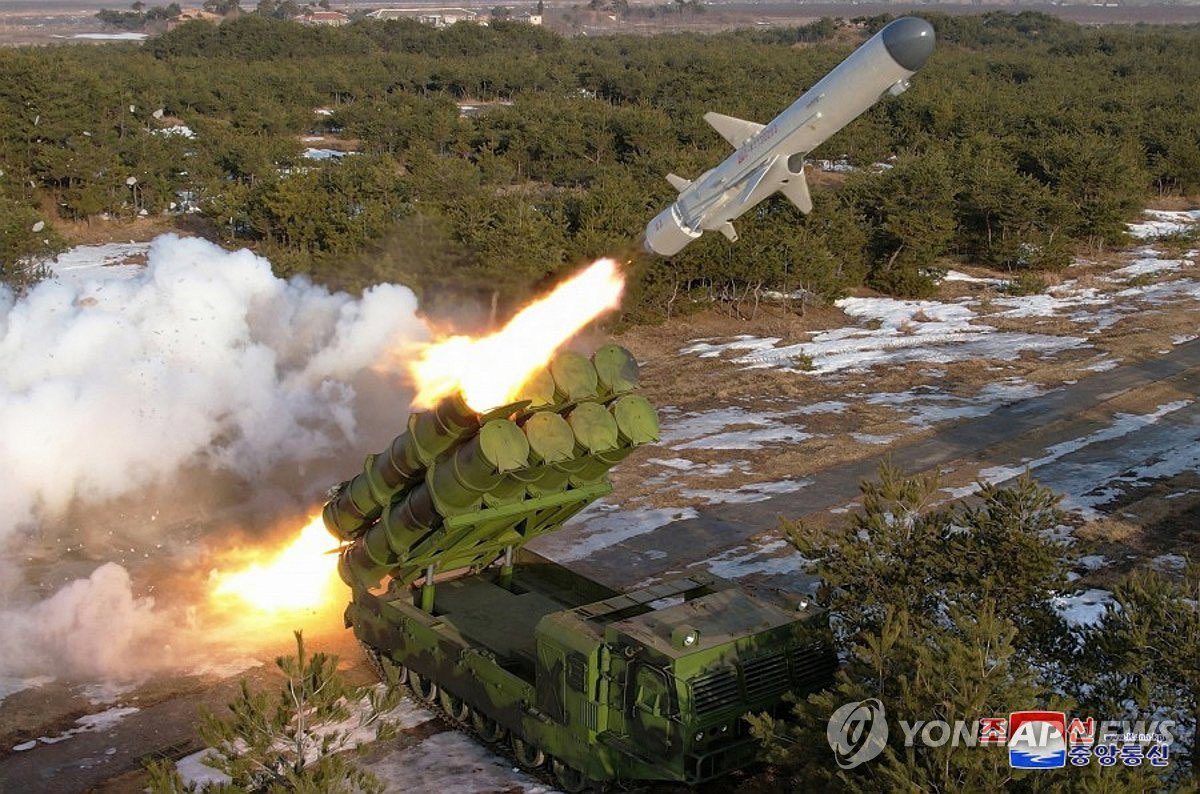Amid North Korean missile and drone threats, South Korea is developing an indigenous ship-based air defense system for its upcoming home-built Korean Destroyer Next Generation (KDDX). The missile is also envisaged to replace the US-origin Standard Missile-2 (SM-2) that South Korea uses.
The country’s Defense Acquisition Program Administration (DAPA) announced signing a $249 million deal with South Korean defense and aerospace major LIG Nex1. Seoul plans to have 90 percent of the missile’s components be indigenous.
However, reports said the new missile is largely an analog of the SM-2.
Home-Built, Mass-Produced System Before North Korean Swarms
This techno-industrial goal can also be inferred to have a tactical reason for retaining the capability to mass manufacture the missile and replenish stocks in the event of a prolonged war with North Korea.
That lesson, too, stems from the wars in Ukraine and Gaza, where both Kyiv and Tel Aviv rapidly deplete their surface-to-air missiles (SAM) to Russia’s Geran-2 drones or Hamas’s cheap rockets.
Ukraine’s US and European-made Patriot PAC-3, Norwegian Advanced Surface-to-Air Missile (NASAMS), IRIST-T, or the SAMP/T have come from America’s, Germany’s, and France’s armories. Ukraine, too, had flagged this issue before NATO, calling for a steady supply of anti-air missiles.
New Missile For New Warship
The KDDX itself is a “locally developed combat system equipped with locally produced guided weapons,” being a “smaller Korean version of the US Aegis destroyer.” The planned “naval surface-to-air missile-II is an innovative weapon system (that is expected) to boast precision guidance and search capabilities,” reported PulseNews.

“Replacing the US Standard Missile 2 currently in operation, the new surface-to-air missile is dubbed as type II due to its close operational objectives and concept to the SM-2 missile,” the report added.
LIG Nex1’s “extensive expertise in precision-guided weapons” explains its choice as the “prime contractor for the new surface-to-air missile system.” The project’s design and development phase will run “through 2030.”
DAPA “emphasized” that the military’s acquisition of an “upgraded air defense system against North Korean air threats will strengthen the independent capabilities of local defense enterprises in the research and development of precision-guided weapons.”
Missile’s Capabilities
An illustrated graphic of the Ship-to-Air Missile-II (SAM-II) operational concept shows the missile being flung in a ‘cold-launch’ mode from what can only be vertical launch silo (VLS) cells, with the booster falling off. Thus qualifying as a two-stage projectile, the missile is shown intercepting an incoming North Korean missile at a lower altitude while the latter is in a sea-skimming mode.
It also strikes a fighter-bomber, what appears to be a Russian-origin MiG-29.
Overhead satellites are depicted as linked to the missile, implying the SAM-II will receive guidance and course updates from space-based assets.
In December 2023, South Korea launched its first spy satellite on SpaceX’s Falcon 9 rocket from the Vandenberg US Space Force Base in California.

However, reports describe it as a “reconnaissance satellite” meant to “monitor nuclear-armed North Korea,” suggesting it might predominantly have optical systems and not high-bandwidth communication or Position Navigation Timing (PNT) transponders that can guide missiles.
The KDDX will also be equipped with a ballistic missile interception system. This involves adapting and developing the naval version of “L-SAM,” a long-range surface-to-air guided weapon, too “being developed with domestic technology.” “Thus, the KDDX will be equipped with new Korean versions of medium-range and long-range surface-to-air missiles capable of intercepting ballistic missiles,” said NavalNews.
Standard Missile-2 (SM-2)
The Raytheon-developed SM-2, meanwhile, is designed to shoot down aircraft and anti-ship missiles at a range of 167 km. It is also used by the Australian and Japanese navies. In December 2019, the State Department approved the sale of 94 SM-2s to South Korea for $314 million.
South Korea possibly uses the SM-2 Medium Range (MR) Block I (SM-2MR Block I), also known as the RIM-66 Standard MR. This is because the other SM-2 variant is the SM-2 Block IV (RIM-156A), used to intercept ballistic missiles in their terminal phase. This is a completely different category of threat, not the North Korean cruise missiles and jets that the new South Korean missile or the SM-2 are meant to tackle.
Developed in the 1970s, the SM-2MR introduced inertial and command mid-course guidance. The missile’s autopilot is programmed to fly the most efficient path to the target and can receive course corrections from the ground.
Target illumination for semi-active homing is needed only for a few seconds in the terminal phase of the interception. This capability enables the Aegis combat system and the New Threat Upgrade (NTU) equipped vessels to time share illumination radars, greatly increasing the number of targets that can be engaged at one time.
North Korean Missile Tests
On February 15, North Korea tested the Padasuri-6 “surface-to-sea missile.” “Multiple” missiles were fired that “hit their intended targets after flying over the East Sea (or Sea of Japan) for 1,400 seconds.” The missile, seen in an official photo by KCNA, exhibited sufficient sophistication in design and fundamental technical concepts.

It showed a disposable booster stage in the tail-end, an underbelly intake, and a small module protruding under the chin. This could possibly come into play during the terminal stage while honing in on a target.
On February 2, it tested another unidentified series of “cruise” and “new land-to-air missiles” off its west coast in a “barrage of launches.” One official photo showed the missile taking off vertically and then hitting a land target on a coast while approaching it horizontally. It is not clear if the launch and target engagement/destruction photos belong to the same missile.
- The author can be reached at satamp@gmail.com
- Follow EurAsian Times on Google News




